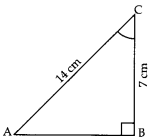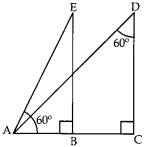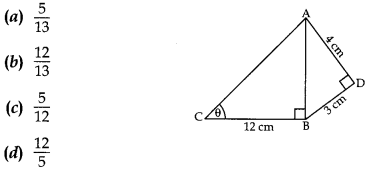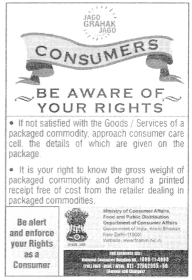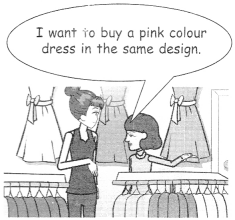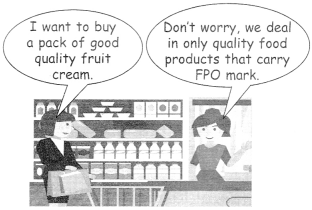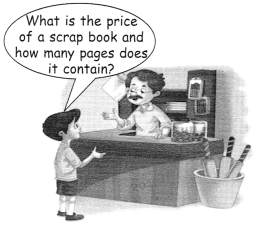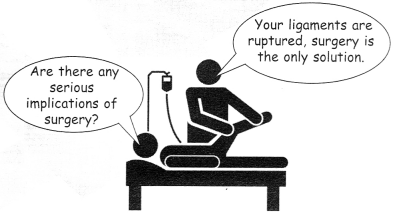We have compiled the NCERT MCQ Questions for Class 10 Geography Chapter 5 Minerals and Energy Resources with Answers Pdf free download covering the entire syllabus. Practice MCQ Questions for Class 10 Geography with Answers on a daily basis and score well in exams. Refer to the Minerals and Energy Resources Class 10 MCQs Questions with Answers here along with a detailed explanation.
Minerals and Energy Resources Class 10 MCQs Questions with Answers
Question 1.
Which is correct about Magnetite iron ore?
(a) Magnetite is the most important industrial iron ore in terms of the quantity used.
(b) Magnetite has the inferior magnetic qualities which is not valuable in the electric industry.
(c) It is the finest iron ore with a very high content of iron up to 70%.
(d) It has a slightly lower iron content than haematite (50-60%).
Answer
Answer: (c) It is the finest iron ore with a very high content of iron up to 70%.
Question 2.
Which one of the following is an essential feature of Mica?
(a) It is a metallic mineral made up of a series of plates
(b) It can be clear, black, green, red, yellow or brown.
(c) It is not used in electric and electronic industry.
(d) It cannot be easily split into thin sheets
Answer
Answer: (b) It can be clear, black, green, red, yellow or brown.
Question 3.
Which of the following includes non-ferrous metals?
(a) Iron and manganese
(b) Steel and iron ore
(c) Haematite and magnetite
(d) Copper and bauxite
Answer
Answer: (d) Copper and bauxite
Question 4.
Which one of the following non-conventional sources of energy is harnessed in the Parvati Valley near Manikaran in Himachal Pradesh
(a) Tidal Energy
(b) Geothermal Energy
(c) Wind Energy
(d) Solar Energy
Answer
Answer: (b) Geothermal Energy
Question 5.
Which one of the following does not influence the location of industries?
(a) Availability of raw material and electricity.
(b) Availability of markets and capital.
(c) Availability of raw material and labour.
(d) Availability of educational and medical services.
Answer
Answer: (d) Availability of educational and medical services.
Question 6.
Which one of the following minerals is not obtained from the veins and lodes?
(a) Tin
(b) Zinc
(c) Lead
(d) Gypsum
Answer
Answer: (d) Gypsum
Question 7.
Which one of the following is not true regarding wind power in India?
(a) The largest wind farm cluster is located in Tamil Nadu.
(b) Jaisalmer is well known for effective use of wind energy in our country.
(c) Andhra Pradesh and Karnataka have important wind farms.
(d) Andaman Nicobar islands have important wind farms.
Answer
Answer: (d) Andaman Nicobar islands have important wind farms.
Question 8.
Which one of the following is not true regarding the importance of manufacturing industries?
(a) They generate jobs in the secondary and tertiary sectors.
(b) Export of manufactured goods brings in forgein exchange.
(c) Manufacturing industries encourage trade and commerce.
(d) The economic strength of a country is measured in terms of the raw material it possesses.
Answer
Answer: (d) The economic strength of a country is measured in terms of the raw material it possesses.
Question 9.
Where is an experimental geo-thermal energy project located in India ?
(a) Gulf of Kuchch – Gujarat
(b) Puga valley – Ladakh
(c) Ganga valley – Himachal Pradesh
(d) Nagarcoil – Tamil Nadu
Answer
Answer: (b) Puga valley – Ladakh
Question 10.
Which one of the following factors is responsible for the sugar mills to shift and concentrate in the southern and western states of India?
(a) Sugarcane is bulky raw material.
(b) The sucrose content reduces with distance.
(c) The cane produced has higher sucrose content.
(d) The cooperative are not successful.
Answer
Answer: (c) The cane produced has higher sucrose content.
Question 11.
The best quality of iron ore is:
(a) Magnetite
(b) Pyrite
(c) Hematite
(d) Siderite
Answer
Answer: (a) Magnetite
Question 12.
Which form of coal has a low carbon and high moisture contents and low heating capacity?
(a) Peat
(b) Lignite
(c) Anthracite
(d) Bituminous
Answer
Answer: (a) Peat
Question 13.
In which state of India are the Khetri Copper mines situated?
(a) Punjab
(b) Jharkhand
(c) Rajasthan
(d) Madhya Pradesh
Answer
Answer: (c) Rajasthan
Question 14.
The highest quality of hard coal is:
(a) Lignite
(b) Bituminous
(c) Peat
(d) Anthracite
Answer
Answer: (d) Anthracite
Question 15.
Which one of the following minerals belongs to the category of ferrous minerals?
(a) Mica
(b) Silver
(c) Bauxite
(d) Manganese
Answer
Answer: (d) Manganese
Question 16.
Which one of the following is largely derived from ocean water?
(a) Bauxite
(b) Magnesium
(c) Gold
(d) Mica
Answer
Answer: (b) Magnesium
Question 17.
The largest manganese producing state of India is:
(a) Orissa
(b) Madhya Pradesh
(c) Karnataka
(d) Kerala
Answer
Answer: (a) Orissa
Question 18.
Which one of the following states, is the largest producer of copper in India ?
(a) Orissa
(b) Karnataka
(c) Madhya Pradesh
(d) Gujarat
Answer
Answer: (c) Madhya Pradesh
Question 19.
The largest solar plant of India is located at:
(a) Madhapur
(b) Nagarcoil
(c) Madurai
(d) Manikaran
Answer
Answer: (a) Madhapur
Question 20.
In which of the following iron ore belt Kudremukh mines are located?
(a) Orissa-Jharkhand belt
(b) Maharashtra-Goa belt
(c) Durg-Baster-Chandrapur belt
(d) Bellary-Chitradiga-Chikmaglur-Tumkur belt
Answer
Answer: (d) Bellary-Chitradiga-Chikmaglur-Tumkur belt
Question 21.
Which of the following is non-metallic mineral?
(a) Iron ore
(b) Copper
(c) Bauxite
(d) Lime stone
Answer
Answer: (d) Lime stone
Question 22.
Which one of the following non- conventional sources of energy is harnessed near Manikarn in Himachal Pradesh?
(a) Geothermal Energy
(b) Wind energy
(c) Solar energy
(d) None of the above
Answer
Answer: (a) Geothermal Energy
Question 23.
Which one of the following minerals is contained in the monazite sands?
(a) Oil
(b) Uranium
(c) Thorium
(d) Coal
Answer
Answer: (c) Thorium
Question 24.
Which of the following is the oldest oil producing state of India?
(a) Gujarat
(b) Madhya Pradesh
(c) Assam
(d) Andaman Nicobar island
Answer
Answer: (c) Assam
Question 25.
Which one of the following states is the largest producer of bauxite?
(a) Rajasthan
(b) Madhya Pradesh
(c) Orissa
(d) Gujarat
Answer
Answer: (c) Orissa
Question 26
In which one of the following states the largest wind farm cluster is located?
(a) Gujarat
(b) Kerala
(c) Rajasthan
(d) Tamil Nadu
Answer
Answer: (d) Tamil Nadu
Question 27.
Which one of the following states, is the largest producer of copper in India ?
(a) Orissa
(b) Karnataka
(c) Madhya Pradesh
(d) Gujarat
Answer
Answer: (c) Madhya Pradesh
Question 28.
The larger occurrences of minerals of igneous and metamorphic rocks are called:
(a) Veins
(b) Lodes
(c) Beds
(d) Layers
Answer
Answer: (b) Lodes
Question 29.
Which of the following sedimentary minerals is formed as a result of evaporation, especially in arid regions?
(a) Coal
(b) Potash salt
(c) Iron ore
(d) Sulphur
Answer
Answer: (b) Potash salt
Question 30.
Which of the following rocks consists of a single mineral?
(a) Granite
(b) Basalt
(c) Limestone
(d) Sandstone
Answer
Answer: (c) Limestone
Question 31.
Minerals are deposited and accumulated in strata of which of the following rocks?
(a) Sedimentary rocks
(b) Metamorphic rocks
(c) Igneous rocks
(d) None of the above
Answer
Answer: (a) Sedimentary rocks
Question 32.
Minerals formed from solidification of molten matter in the crack, crevices, faults or joints are found in which types of rocks?
(a) Stratified rocks
(b) Igneous and metamorphic rocks
(c) Sedimentary rocks
(d) None of the above
Answer
Answer: (b) Igneous and metamorphic rocks
Question 33.
Study about which of the characteristics of minerals is not a concern of geographers?
(a) Minerals as part of the earth’s crust for better understanding of landforms.
(b) Distribution of minerals
(c) Economic activities associated with minerals
(d) Formation, age and physical and chemical composition of minerals
Answer
Answer: (d) Formation, age and physical and chemical composition of minerals
Question 34.
Which of the following is the finest quality of iron ore with magnetic qualities ?
(a) Magnetite
(b) Haematite
(c) Siderite
(d) Limonite
Answer
Answer: (a) Magnetite
Question 35.
Metals like gold, silver and platinum are known as which of the following?
(a) Ferrous minerals
(b) Non-ferrous minerals
(c) Non-metallic minerals
(d) Precious minerals
Answer
Answer: (d) Precious minerals
Question 36.
Which of the following regions of India is almost devoid of economic minerals?
(a) The Himalayan belt
(b) The alluvial plains of North India
(c) The Thar desert
(d) The Peninsular plateau
Answer
Answer: (b) The alluvial plains of North India
Question 37.
Which of the following is a major metallic mineral obtained from veins and lodes?
(a) Tin
(b) Iron
(c) Manganese
(d) Gold
Answer
Answer: (a) Tin
Question 38.
Which of the following regions of India contain most of the reserves of coal, metallic minerals, mica and many other non-metallic minerals?
(a) The Himalayas
(b) Alluvial plains of North India
(c) Rock system of peninsula in Rajasthan
(d) Peninsular plateau region
Answer
Answer: (d) Peninsular plateau region
Question 39.
To which of the following categories of resources, do minerals belong ?
(a) Renewable and replenishable
(b) Flow
(c) Non-renewable and finite
(d) None of the above
Answer
Answer: (c) Non-renewable and finite
Question 40.
Which of the following minerals is an important raw material in the iron and steel industry apart from iron ?
(a) Mica
(b) Aluminium
(c) Gypsum
(d) Manganese
Answer
Answer: (d) Manganese
Question 41.
Which one of the following mineral ores is formed by decomposition of rocks, leaving a residual mass of weathered material?
(a) Coal
(b) Bauxite
(c) Gold
(d) Zinc
Answer
Answer: (b) Bauxite
Question 42.
Which of the following minerals is indispensable for electric and electronic industries?
(a) Iron
(b) Nickel
(c) Manganese
(d) Mica
Answer
Answer: (d) Mica
Question 43.
India’s reserves and production of which of the following types of minerals is not very satisfactory?
(a) Ferrous Minerals
(b) Non-Ferrous Minerals
(c) Energy Minerals
(d) None of the above
Answer
Answer: (b) Non-Ferrous Minerals
Question 44.
Which of the following is a fuel mineral?
(a) Hydro-electricity
(b) Solar power
(c) Thorium
(d) Biogas
Answer
Answer: (c) Thorium
Question 45.
Koderma in Jharkhand is the leading producer of which one of the following minerals?
(a) Bauxite
(b) Mica
(c) Iron ore
(d) Copper
Answer
Answer: (b) Mica
Question 46.
Due to which of the following reasons is the Bailadila range in the Bastar district of Chhattisgarh famous?
(a) It is the highest range in Central India
(b) Very high grade haematite variety of iron ore is found here
(c) Very high grade coal deposits are found here
(d) It is the largest iron ore deposit in the world
Answer
Answer: (b) Very high grade haematite variety of iron ore is found here
Question 47.
Which of the following is a fuel mineral?
(a) Hydro-electricity
(b) Solar power
(c) Thorium
(d) Biogas
Answer
Answer: (c) Thorium
Question 48.
Which of the following is the most abundantly available fossil fuel in India?
(a) Petroleum
(b) Coal
(c) Firewood
(d) Biogas
Answer
Answer: (b) Coal
Question 49.
Which of the following energy sources are not the conventional sources of energy?
(a) Firewood, cattle dung cake
(b) Atomic energy, biogas, solar energy
(c) Coal, petroleum, natural gas
(d) Hydel and thermal electricity
Answer
Answer: (b) Atomic energy, biogas, solar energy
Question 50.
Which of the following energy sources is also termed as mineral oil or crude oil?
(a) Coal
(b) Petroleum
(c) Biogas
(d) Natural gas
Answer
Answer: (b) Petroleum
Question 51.
Which of the following industries are the key users of natural gas?
(a) Cotton and jute textiles
(b) The power and fertiliser industries
(c) Iron and steel industry
(d) All the above
Answer
Answer: (b) The power and fertiliser industries
Question 52.
Which of the following is the geological age of coal found in north-eastern India?
(a) Jurassic
(b) Gondwana
(c) Tertiary
(d) Pre-Cambrian
Answer
Answer: (c) Tertiary
Question 53.
Which of the following uses non- renewable fossil fuels for generation of electricity?
(a) Hydro-electricity projects
(b) Thermal power stations
(c) Geothermal energy stations
(d) Nuclear power plants
Answer
Answer: (b) Thermal power stations
Question 54.
Petroleum was first drilled in which of the following oilfields of India ?
(a) Ankaleshwar
(b) Digboi
(c) Mumbai High
(d) Kalol
Answer
Answer: (b) Digboi
Question 55.
Which of the following is considered to be an environment friendly fuel?
(a) Peat
(b) Coal
(c) Petroleum
(d) Natural gas
Answer
Answer: (d) Natural gas
Question 56.
Which one of the following features is not true about copper?
(a) India is deficient in the reserve and production of copper.
(b) It is meliable, ductile and a good conductor.
(c) It is a ferrous ore.
(d) It is mainly used in electrical cables and electronic goods.
Answer
Answer: (c) It is a ferrous ore.
Hope the information shed above regarding NCERT MCQ Questions for Class 10 Geography Chapter 5 Minerals and Energy Resources with Answers Pdf free download has been useful to an extent. If you have any other queries of CBSE Class 10 Geography Minerals and Energy Resources MCQs Multiple Choice Questions with Answers, feel free to reach us so that we can revert back to us at the earliest possible.


